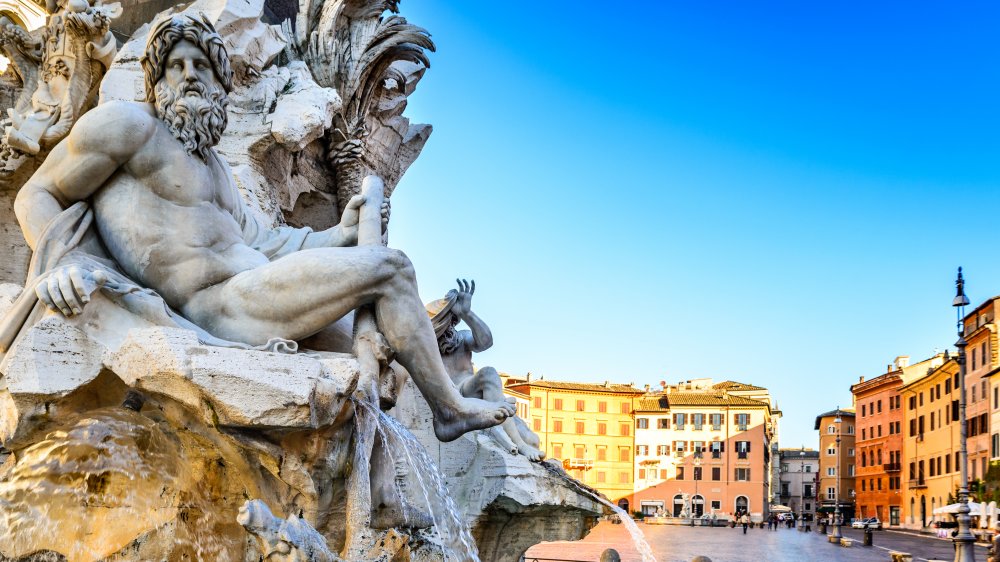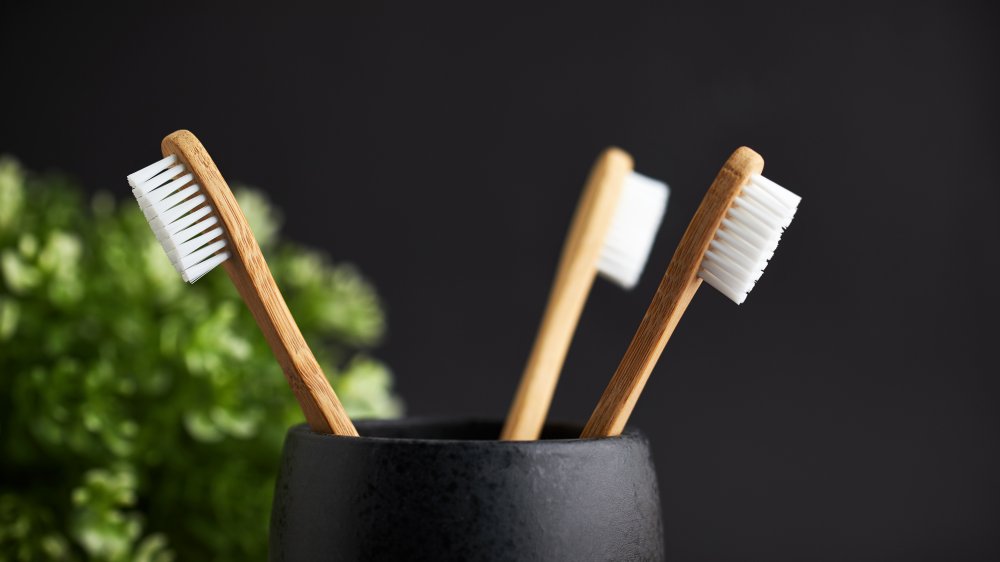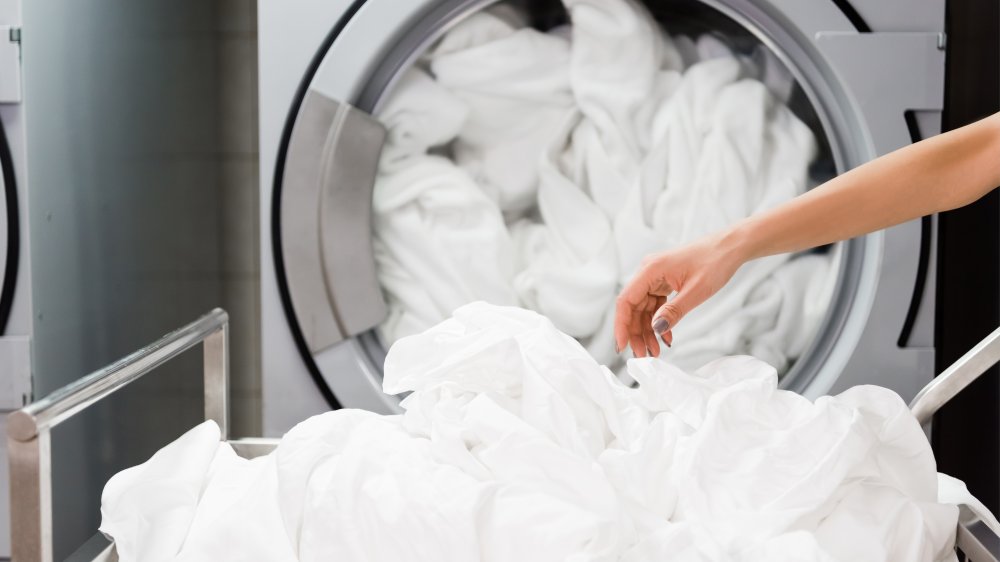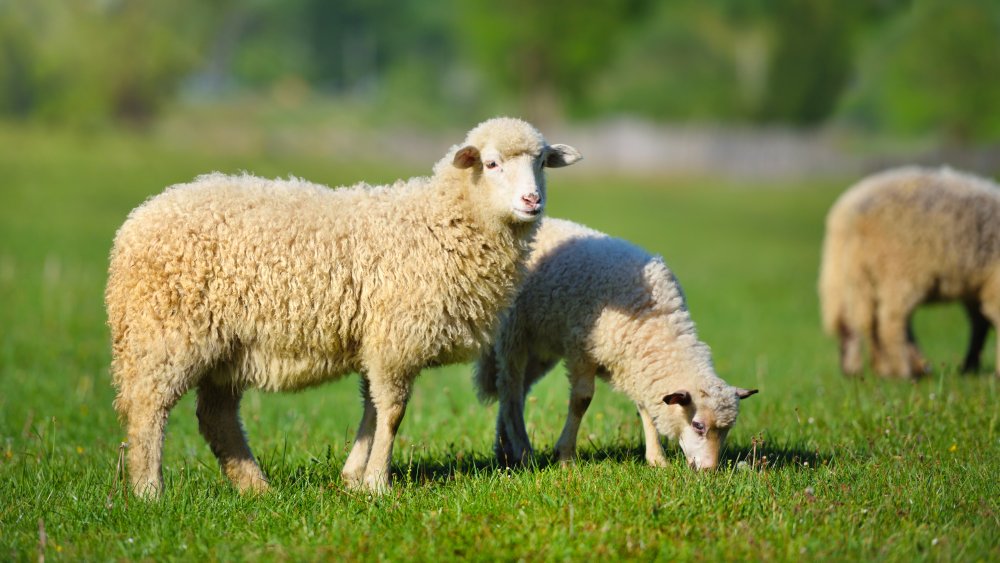The Bizarre Way Urine Was Used By The Ancient Romans
Humans have always had an odd fascination with urine. In today's world, it's the butt of many jokes, part of extreme sexual taboos, and an elixir within a specific pseudoscientific "health" movement that won't get you a whole lot of dates. Everybody urinates multiple times every single day. Well, unless they have a serious health condition that prevents it, in which case they probably wish they could.
Wouldn't it be nice to believe this fascination with urination began in modern times? It would be us who were the odd ones, we who were the possibly obsessive ones, and not all of humanity since the dawn of bipedalism. It seems to be human nature to have a fascination with bathroom and bathroom-related activities that began with our ancient ancestors and will probably continue until approximately always. Just take a look back at one of Western Civilization's ancient forefathers, Ancient Rome, and it's clear that these fascinations are nothing new. Because the Roman Empire (from our modern perspective, anyway) did some seriously bizarre things with urine.
Good dental care begins with a healthy pee
Tooth health was a major factor in human survival through ancient times. Blenders weren't a thing in the past and without teeth, you didn't have a whole lot of options when it came to stuffing your gullet. Sure, maybe you could find someone willing to pre-chew all your food for you, and while that sounds pretty gross. during the days of Ancient Rome, dental care could be just as disgusting.
Dental care before written language is largely theory, since the humans around then couldn't exactly leave us diaries to look through. Luckily, the Ancient Romans could and did write about everything, including using urine to brush their teeth. Tufts University posts a poem by the Ancient Roman writer Catullus that describes the fantastically white smile one gets when they first pee on their toothbrush. According to Smithsonian, this probably worked. The ammonia in urine can act as a kind of bleaching agent on teeth that would take the stains right off and leave smiles looking healthy. Ammonia wasn't synthesized for the first time until 1828, so the Ancient Romans didn't have a whole lot of alternatives. To be honest, it's pretty amazing that a civilization that existed a couple thousand years ago thought about brushing their teeth at all, even if they did have urinal-scented morning breath.
The number one stain remover
Before Tide and Clorox, there wasn't exactly a wide array of options with which to clean one's clothes. Elbow grease was probably the most common, but beating cloth against a grid or soaking togas for hours wouldn't remove stubborn stains. So, when an Ancient Roman kid came home with grass-stained knees, there was only one option to keep their whites white: Urine, the number one stain remover. (Chances are white cloth washed in urine was more of a yellowish-white, but that's still cleaner than blotchy stains.)
The method the Ancient Romans used to wash their laundry, according to A Dictionary of Greek and Roman Antiquities, was pretty much what you'd expect. They had ancient laundromats, known as a fullonica, operated by servants who would throw the linens into a large vat and stomp the dirt out of them. Most of the clothes were made of wool, which gets pretty gross in the type of hot climate that Rome has, so getting these clothes washed was a must.
The liquid used at a fullonica wasn't usually just water. It often contained a large amount of human and animal urine, collected by way of vessels placed at street corners for the convenience of passersby and contributing to societal cleanliness without ever worrying about those pesky "for customers only" signs.
You wouldn't trust their veterinary procedures
Besides cleanliness, urine has been used as medicine by different civilizations throughout the ages. In the case of Ancient Rome, the results of going number one was a common veterinary tool that was thought to cure all different sorts of ailments in livestock, especially oxen and sheep.
The Ancient Romans, who were credited with several fantastic discoveries and inventions, figured out that the way urine decomposes tends to make it harmful to bacteria. It's actually a mediocre antiseptic agent if you have nothing else on hand. According to The Economy of Ordure, the Ancient Romans would use urine as a treatment for burns their livestock may have sustained. Scabies and festering wounds needed something a little more powerful, so they'd allow the urine to age before washing down the afflicted area. If the animals were having stomach issues, they'd be fed a hefty draught of pee. If they were having lung or breathing problems, the Ancient Romans would funnel urine into the animal's nostrils, particularly the left one.
Bovine urine was the preferred treatment for oxen and cattle, while that produced by humans was the go-to for sheep. The urine treatment rules were pretty intricate, but it's clear that the Ancient Romans had an entire veterinary system that used the stuff. From chickens to bees to oxen and sheep: for the Romans, pee was a livestock cure-all.



